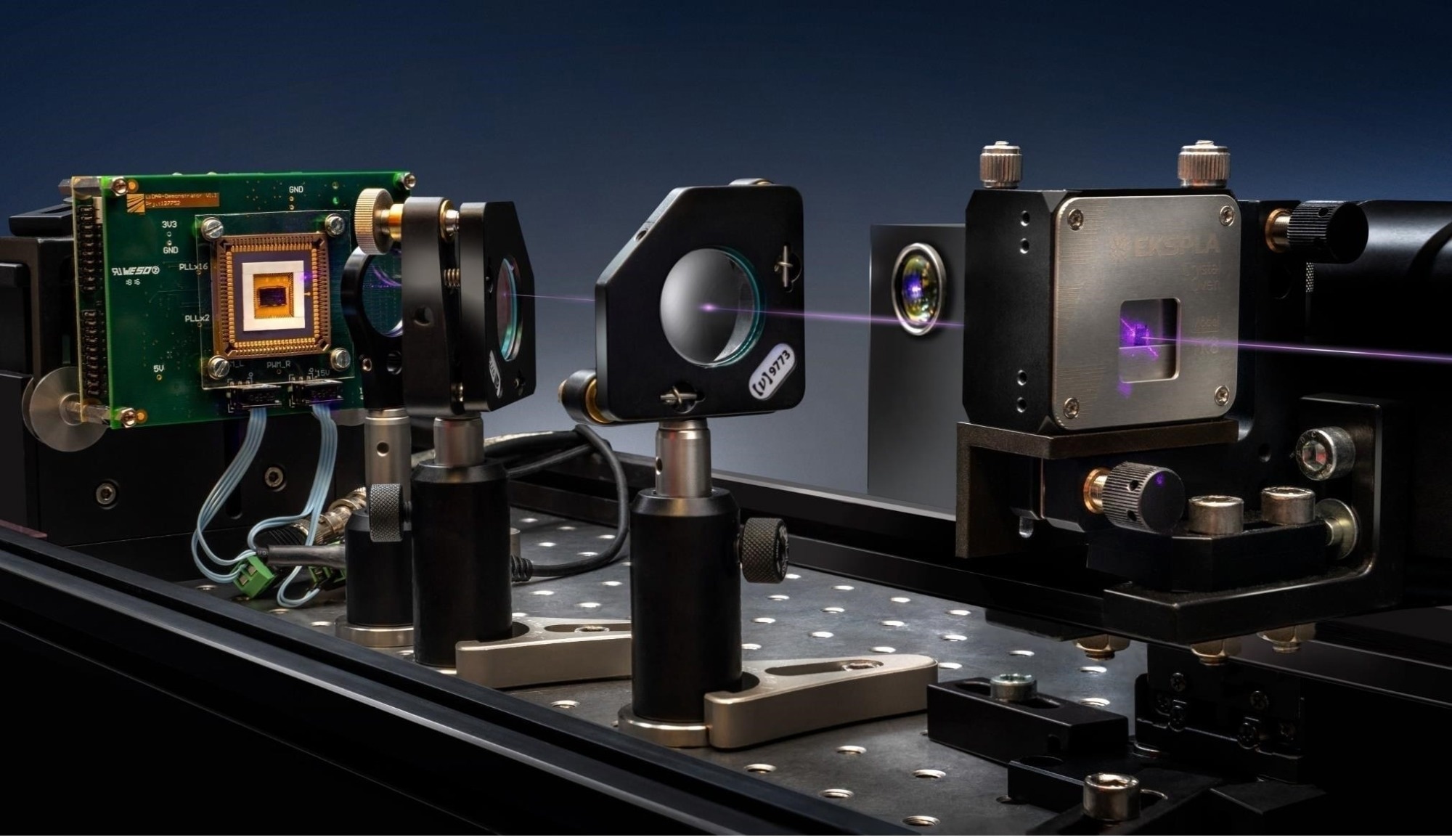The first 3D measurements that have been gained with quantum ghost imaging have been reported by scientists. The new method allows 3D imaging on a single photon level, thereby providing the lowest photon dose feasible for any measurement.

Researchers developed a new approach that allows 3D measurements to be acquired with a computational imaging approach known as quantum ghost imaging. A SPAD array detector, shown on the left of the optical setup, is key to the new technique. Image Credit: Fraunhofer IOSB/indigo
“3D imaging with single photons could be used for various biomedical applications, such as eye care diagnostics. It can be applied to image materials and tissues that are sensitive to light or drugs that become toxic when exposed to light without any risk of damage,” stated researcher Carsten Pitsch from the Fraunhofer Institute of Optronics, System Technologies and Image Exploitation and Karlsruhe Institute of Technology, both in Germany.
In the Optica Publishing Group journal Applied Optics, the scientists explain their new approach, which integrates new single-photon avalanche diode (SPAD) array detectors. They employ the new imaging scheme, which they refer to as asynchronous detection, to execute 3D imaging along with quantum ghost imaging.
Asynchronous detection might also be useful for military or security applications since it could be used to observe without being detected while also reducing the effects of over-illumination, turbulence, and scattering. We also want to investigate its use in hyperspectral imaging, which could allow multiple spectral regions to be recorded simultaneously while using a very low photon dose. This could be very useful for biological analysis.
Carsten Pitsch, Researcher, Fraunhofer Institute of Optronics, System Technologies and Image Exploitation
Adding a Third Dimension
Quantum ghost imaging makes images utilizing entangled photon pairs in which only one member of the photon pair cooperates with the object. Further, the detection time for each photon is utilized to determine entangled pairs, which enables an image to be rebuilt.
This method not just enables imaging at extremely low light levels but also implies that there is no need for objects being imaged and also not to interact with the photons utilized for imaging.
Earlier setups for quantum ghost imaging were not able to perform 3D imaging since they depended on intensified charge-coupled device (ICCD) cameras. Even though such cameras consist of good spatial resolution, they are time-gated and do not enable the separate temporal detection of single photons.
For this issue to be resolved, the scientists came up with a setup based on new single-photon avalanche diode (SPAD) arrays developed for LiDAR and medical imaging. Such detectors consist of several independent pixels with steadfast timing circuitry, which enable them to record the detection time of each pixel with picosecond resolution.
The new method utilizes two entangled photons—a signal and an idler—to achieve 3D images with single photon illumination. This includes directing the idler photons onto the object and further detecting the backscattered photons in time.
At the same time, the signal photons have been directed to a dedicated camera that detects as many photons as possible in both space and time.
Furthermore, the scientists made a comparison of the time of detection of each pixel with the detection of the single-pixel detector to rebuild the entanglement. Also, this enabled identifying the time of flight of the interacting idler photons and with that, also the depth of the object.
An Adaptable Setup
One more main innovation was the periodic poling of the KTP crystal utilized to make the entangled photons.
This allows highly efficient quasi-phase matching for nearly any triplet of pump-signal-idler and lets us freely choose the wavelengths for illumination and imaging. It also lets us adapt the setup to many other applications or wavelengths.
Carsten Pitsch, Researcher, Fraunhofer Institute of Optronics, System Technologies and Image Exploitation
The scientists illustrated the 3D capabilities of their asynchronous detection scheme by making use of two various separate setups. One, which resembled a Michelson interferometer, obtained images utilizing two spatially separated arms.
This setup enabled the scientists to examine the SPAD performance and enhance coincidence detection. The other setup made use of free-space optics and was more application centered. Rather than imaging with two separated arms, two objects in the same arm were made to be imaged.
Even though more work is required, both setups worked well as a proof-of-concept illustration for the new method. Also, the experiments displayed that asynchronous detection could be utilized for remote detection, which could be beneficial for performing atmospheric measurements.
Currently, to increase the duty cycle and spatial resolution, the scientists are working with a SPAD manufacturer. This is to do the percentage of time the detector is on for the SPAD cameras. Also, they plan to substitute the fiber-coupled idler detector with a quicker free-space coupled detector that turned out to be recently available.
Lastly, the researchers plan to employ the setup of hyperspectral imaging, which can be utilized to execute imaging in the significant mid-infrared spectrum in the absence of the requirement for detectors that work at such wavelengths.
Journal Reference
Pitsch, C., et al. (2023) 3D quantum ghost imaging. Applied Optics. doi.org/10.1364/AO.492208.